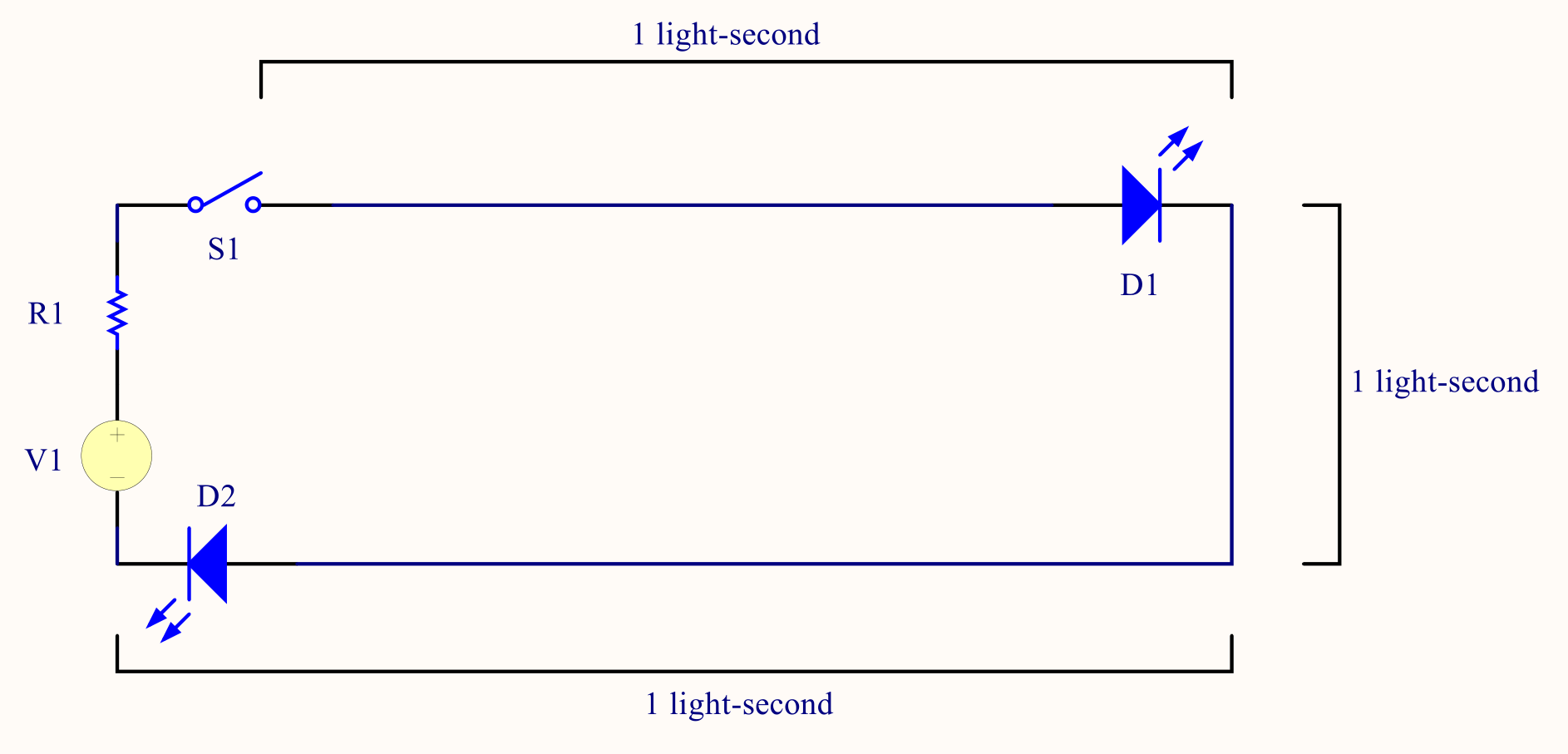Kirchhoff's current law assumes "that whenever current flows into one end of a conductor it immediately flows out the other end".
I want to understand what happens when we cannot make this assumption.
In the circuit below, imagine that $S1$ has been open (disconnected) for a long time. At a time $t = 0$ the switch is instantaneously closed. If we assume that the LEDs have instantaneous switching time, at what time $t$ will $D1$ and $D2$ emit light?
Do the LEDs begin to emit light simultaneously? Do they emit light after 3 light-seconds, 1.5 light-seconds, or some other time?
My guess is that $D1$ will emit light at $t = 1s$ and $D2$ will emit at $t = 3s$. It should be impossible for $D1$ to emit light when $t < 1s$ and for $D2$ to emit light when $t < 3s$. If this were not the case then this would result in superluminal communication, which violates causality.
What happens when a second switch $S2$ is introduced to the circuit below? Imagine that both switches have been open for a long time. At time $t=0$ both $S1$ and $S2$ are simultaneously closed.
At what time $t$ do the LEDs emit light? What changes compared to first circuit?
Assumptions:
- The LEDs and switches are placed in close proximity to each other, although the length of the wires separating them may be very long. For example, $S1$ and $D1$ are separated by a 1 light-second length of wire, however, we assume that they are physically placed close together relative to a human observer looking at the circuit. Only the electrical paths have significant propagation times.
- The electric field propagates through the circuit at c
- All circuit elements are ideal
- Switches and LEDs have instantaneous switching time
- When a switch is open, it is physically disconnected from the circuit.
- There are no parasitic resistances, capacitances, or inductances


